Manon and I have a weekly ritual to bike over to the Jardin Botanique where we wander around, admire the seasonal plantings, look at wildlife, and have a coffee or lunch in the café. In September, the gardens started advertising the Jardins de Lumière, a nighttime event with lights and sculptures. We thought it would be fun to go.
Now, being jaded big-city people who have seen a lot of things in our time, we went with lukewarm expectations. We had some idea of what displays they’d have. For example, during the day, we’d seen preparations in the Chinese garden.
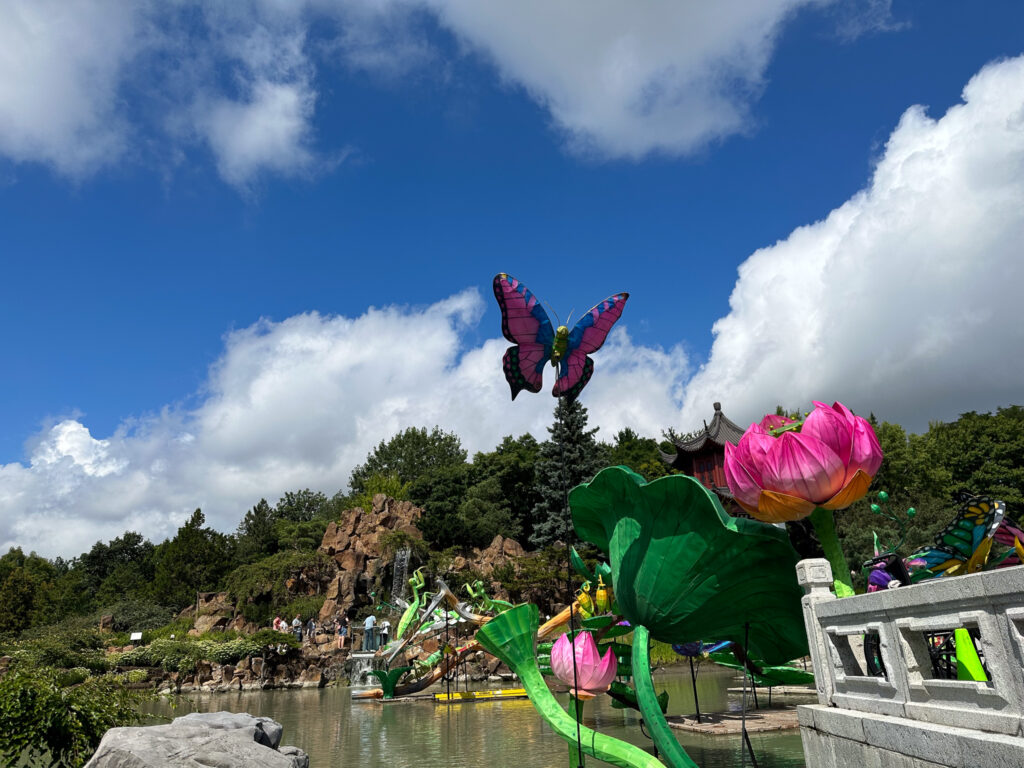
I’d seen these sorts of lantern-like light sculptures at Lightscape at the Arboretum in Pasadena. They’re wood or metal frames covered with painted silk, and illuminated from within. They can be impressive works of art, yet they’re static so a few of them go a long way.
Similarly, wandering around elsewhere, we’d seen the hardware for light projecting installations. We expected these to be something like the displays we’d seen at Descanso Garden’s Enchanted Forest of Light.
As I said, we’re a bit jaded, but still up for an adventure.
Tickets have a narrow time window, so we got to the gardens at our appointed hour. The sky gave us a pre-show display.
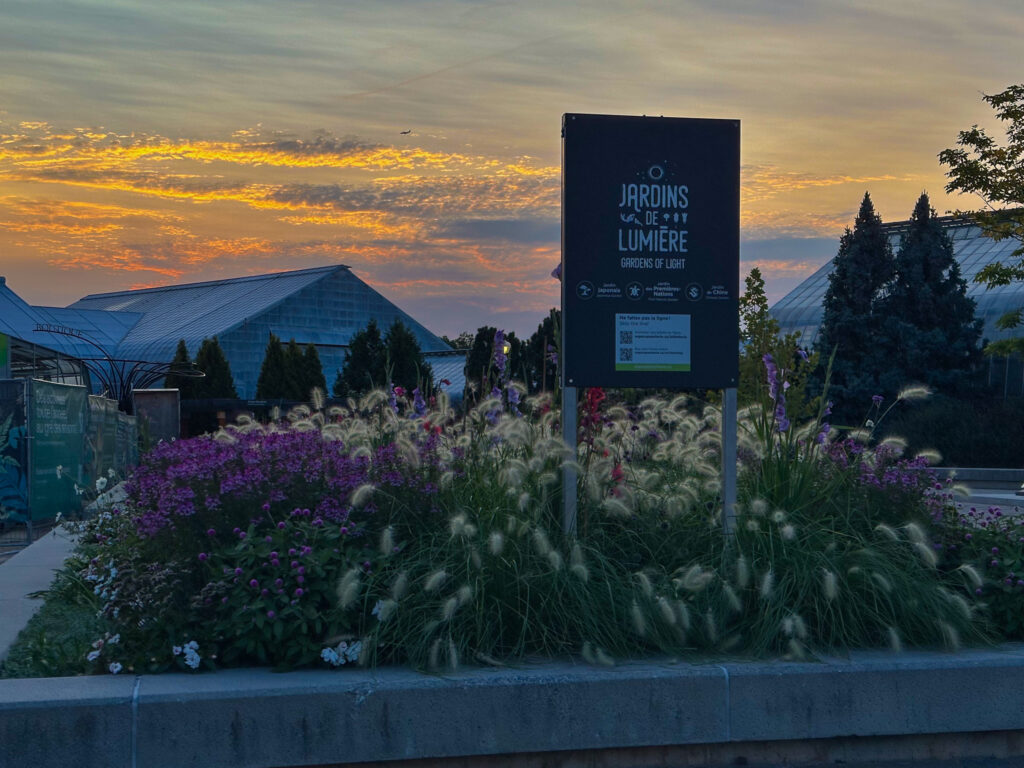
Even before we reached the queueing point, the entryway had an Instagram-friendly portrait portal with a smoke machine and lights.
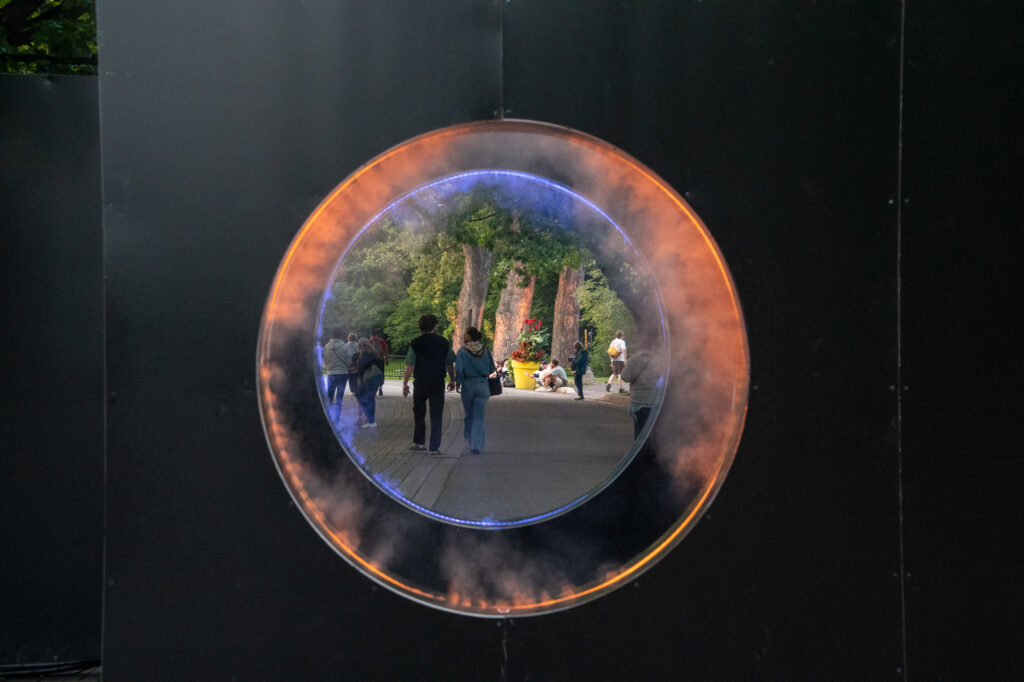
Once inside, we headed down the path, which was illuminated with patterns of leaves. The route through the garden is directed and the exhibits are in a sequence. One exception is the first installation, a moon wolf-howl, which we bypassed on the way in because it was so crowded. We did stop by on our way out, though. It had a row of glowing moon spheres on platforms facing a dense thicket. If you howled into one of the moon spheres, your howl would be answered by wolfish howls from the woods.
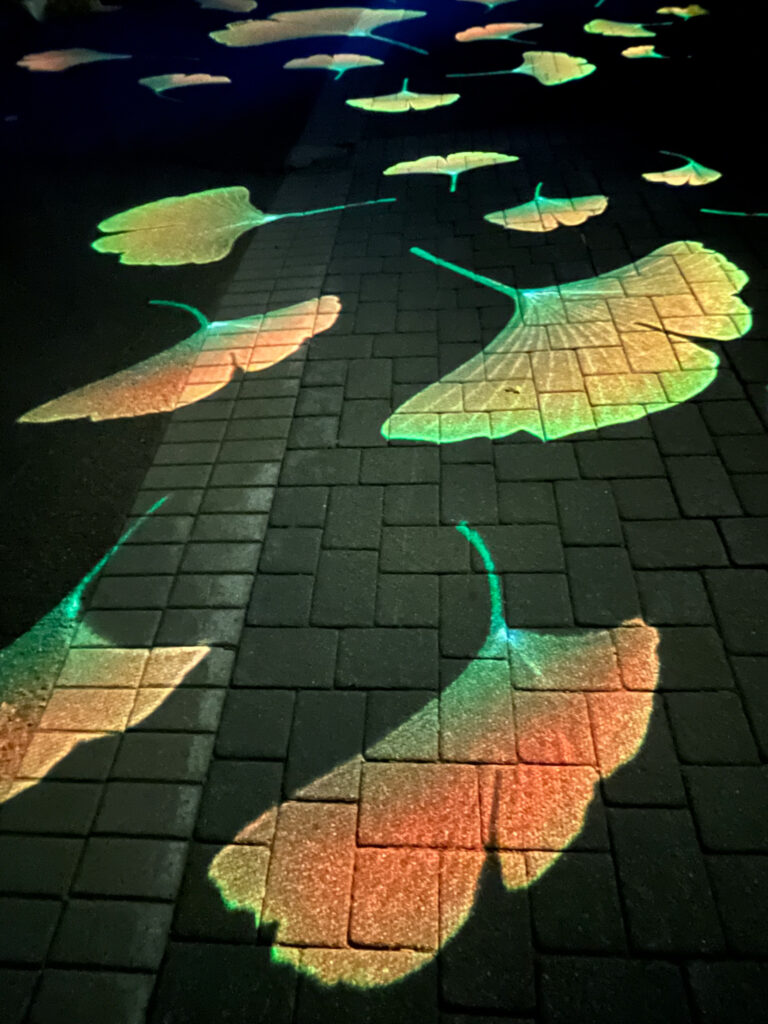
From there, the path went through three major installation complexes. The first was in the Japanese gardens. Passing through a foggy pine forest, there was a jagged line of light through the trees, with sounds and an ongoing shifting story that might have been a storm. We watched from a bench until the mosquitos drove us onward.
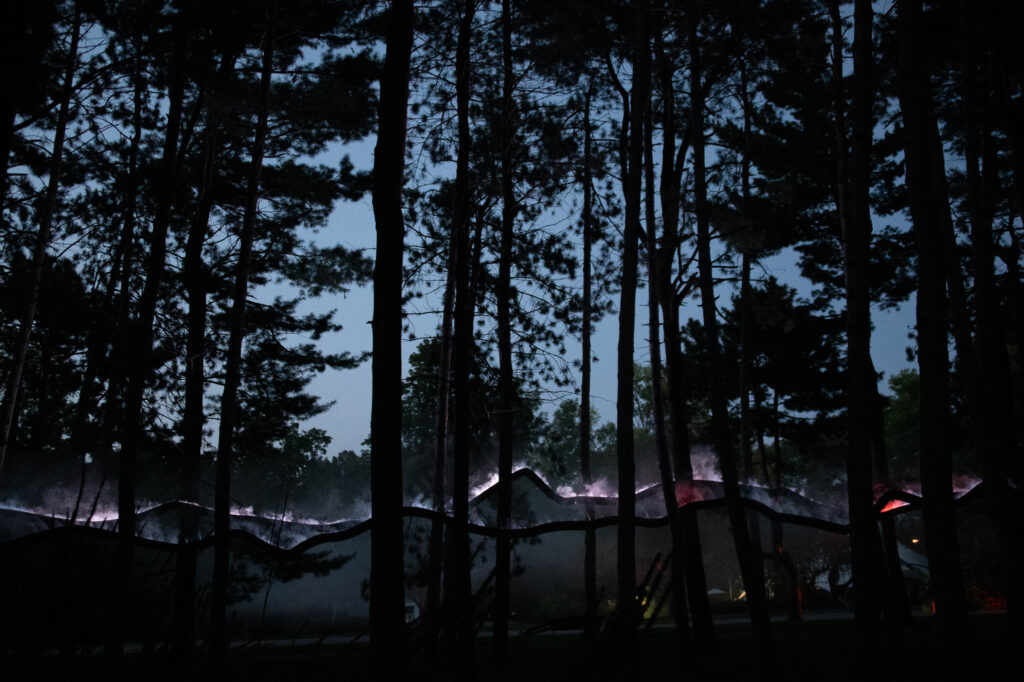
The moon wasn’t about to let the artificial lights have all the glory though. It peered down calmly on the whole proceeding.
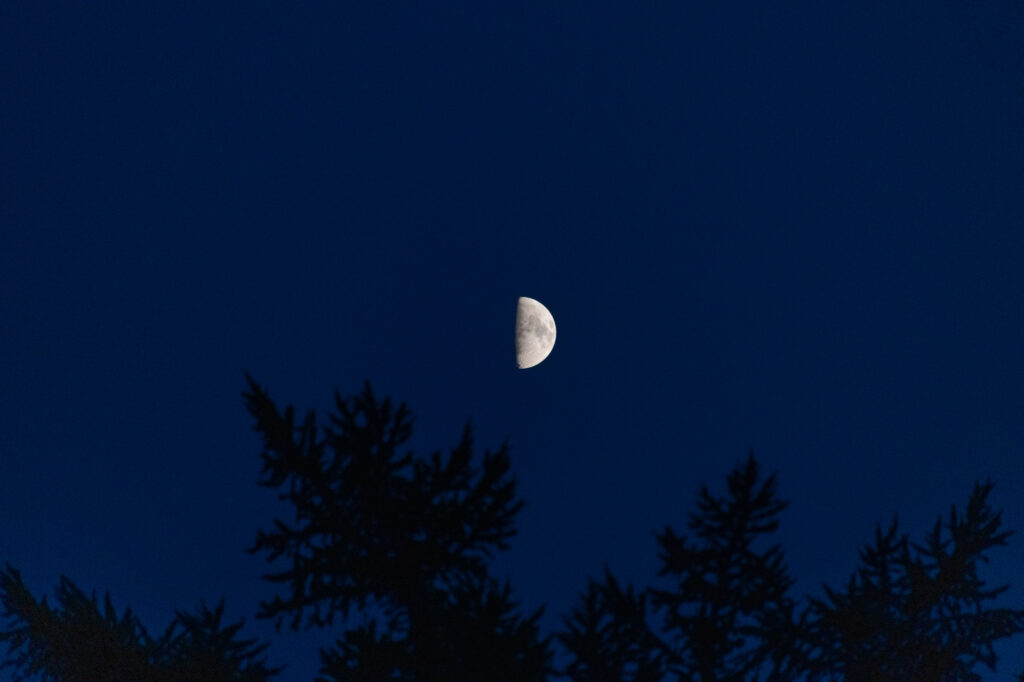
From there, we emerged on a lake. There, under a few fluttering bats[!], we saw a tableaux of mountains, swimming koi, blooming lotus blossoms, and fields of grain projected with accompanying music, while they reflected in the lake. The shifts between scenes were subtle, but some sudden transitions (like one of ripples spreading on a pond) got an audible reaction from the crowd.
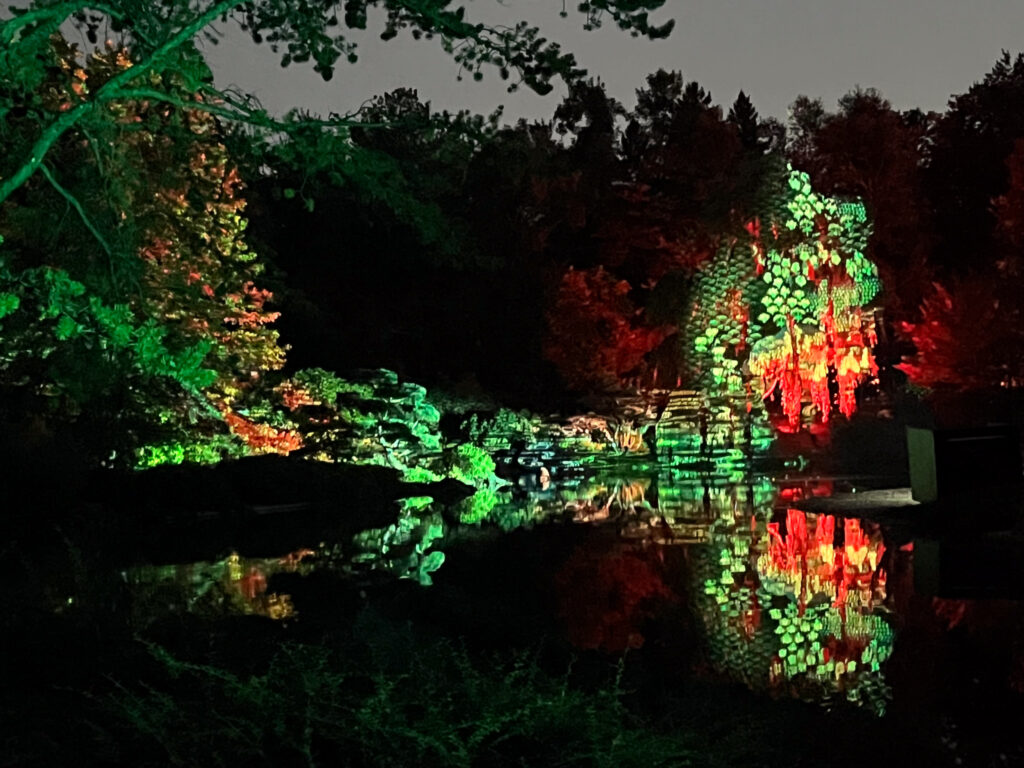
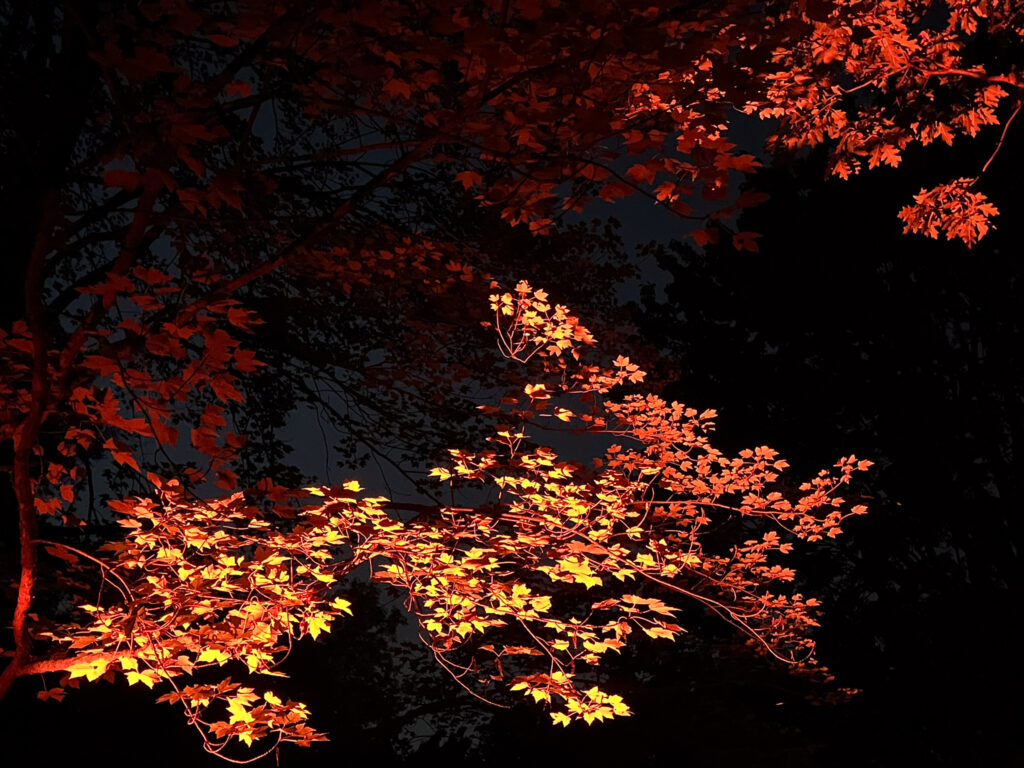
The next major set of installations was in the Indigenous Garden. These started with a curved arch of mist, where a poem by Innu poet Joséphine Bacon was recited in Innu and French.
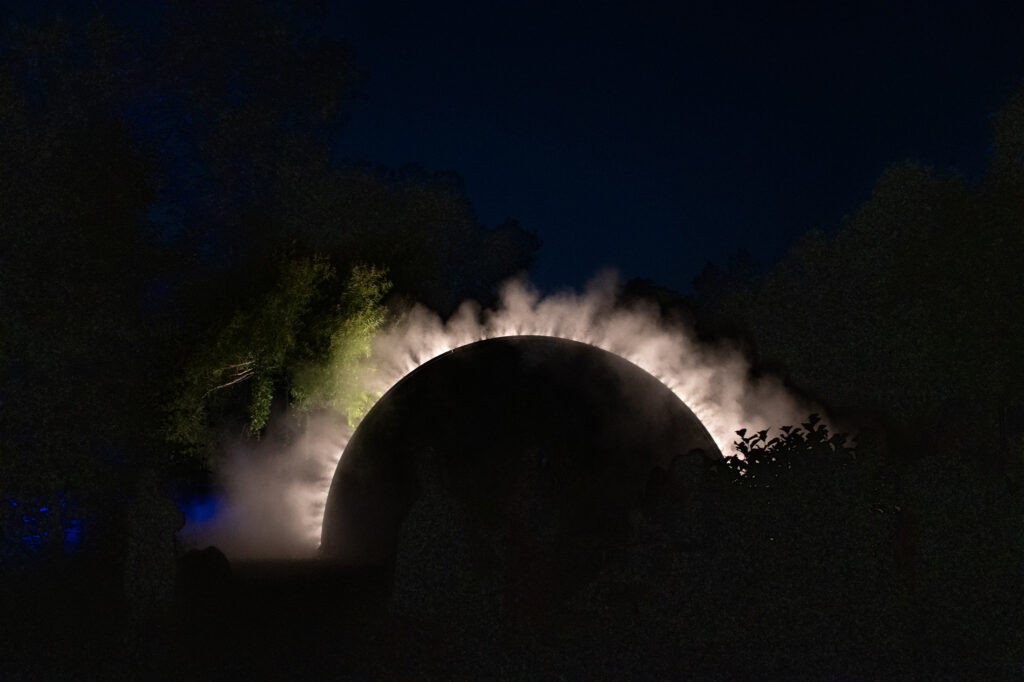
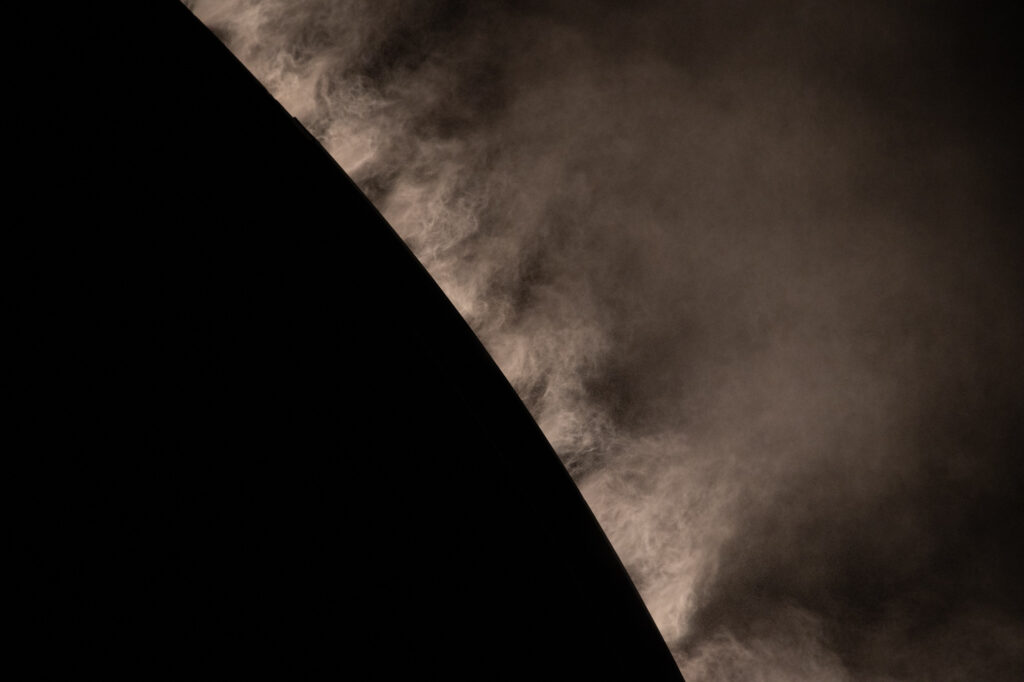
The trail led to a giant cottonwood tree. Here, another story was told in light and sound. It started with a faint red glow and the sound of a heartbeat, and then tendrils of a seed sprouted up the trunk. The sprout grew to a mighty tree, and we heard the wind in the branches and saw swaying leaves. The sound of animals scurrying moved through the branches far above our heads, and birds called. Then a storm came, and there was wind and rain, then thunder and lightning, before the sound of crashing boughs and forest fire. Then from the red glow, the sound of the heartbeat returned, and the cycle repeated.
Noisy audience notwithstanding, this was a very affecting display.
Further into the woods, there were several other exhibits: a wire dome with lightbulbs flickering like a fire, a maple forest full of fog and rising lights, a collection of lanterns that raised and lowered into the trees while fading on and off like will o’ the wisps, and a mirrored bowl that reflected fragments of light through the leafy canopy. Some of these were accompanied by soundscapes, others by songs, recitations of poetry, or traditional prayer (one in Mohawk, according to a sign that provided a translation, while others were left untranslated).
While a lot of the crowd just walked on through this area, each of these installations was worth sitting back and watching/listening for a while.
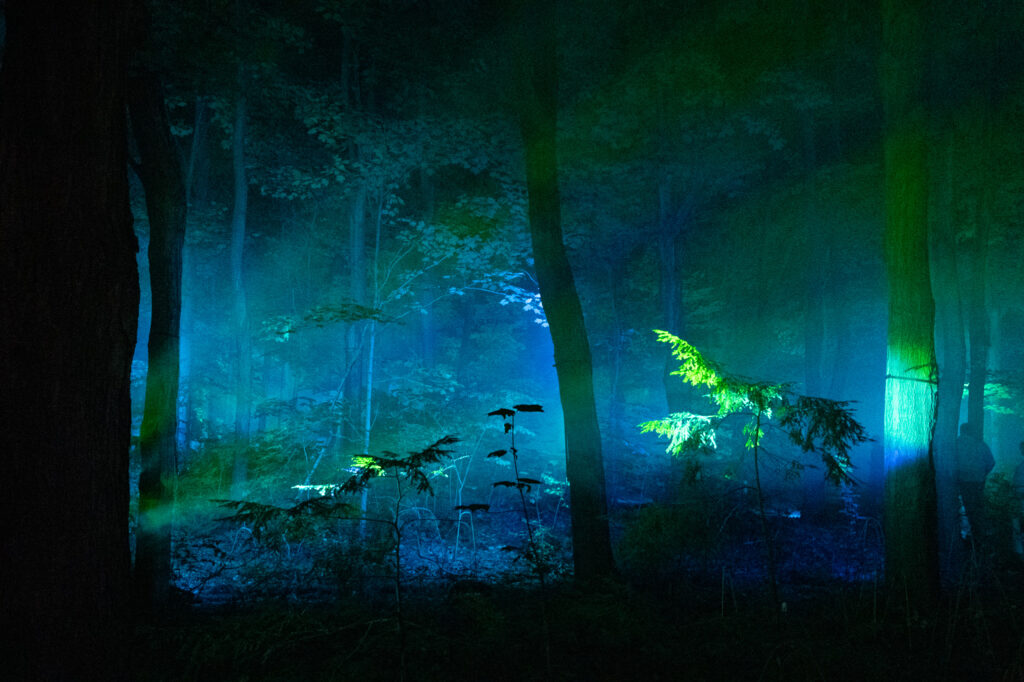
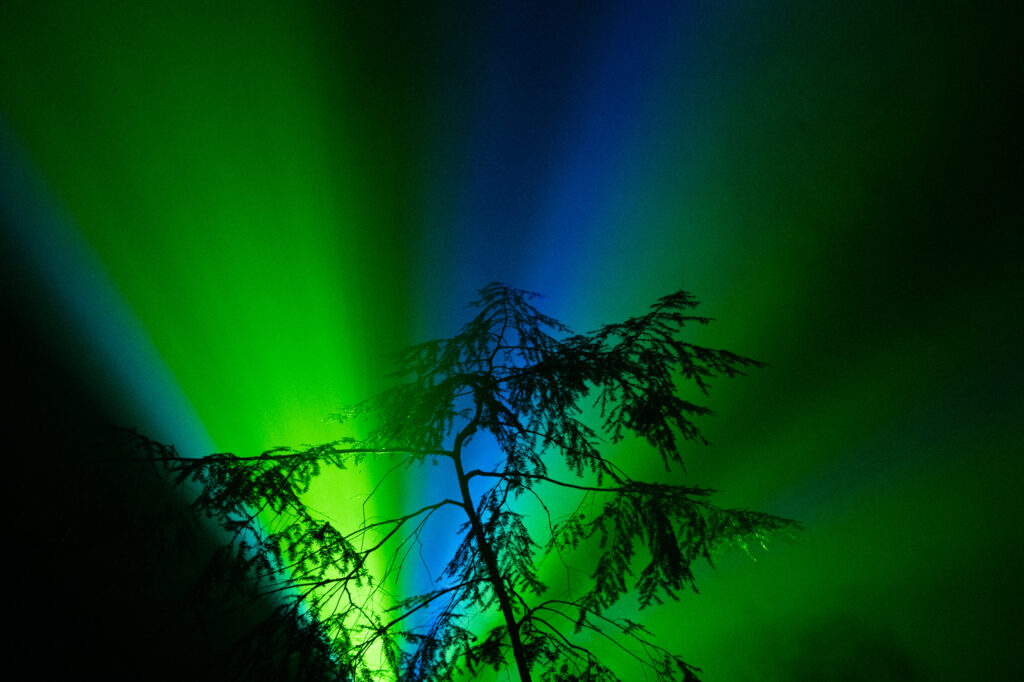
The last installation was in the Chinese garden. But it wasn’t merely the illuminated lantern sculptures! A fan of water sprayed up from the center of the pond, where an animated rendition of the story of the Butterfly Lovers, Liang Shanbo and Zhu Yingtai, was projected.
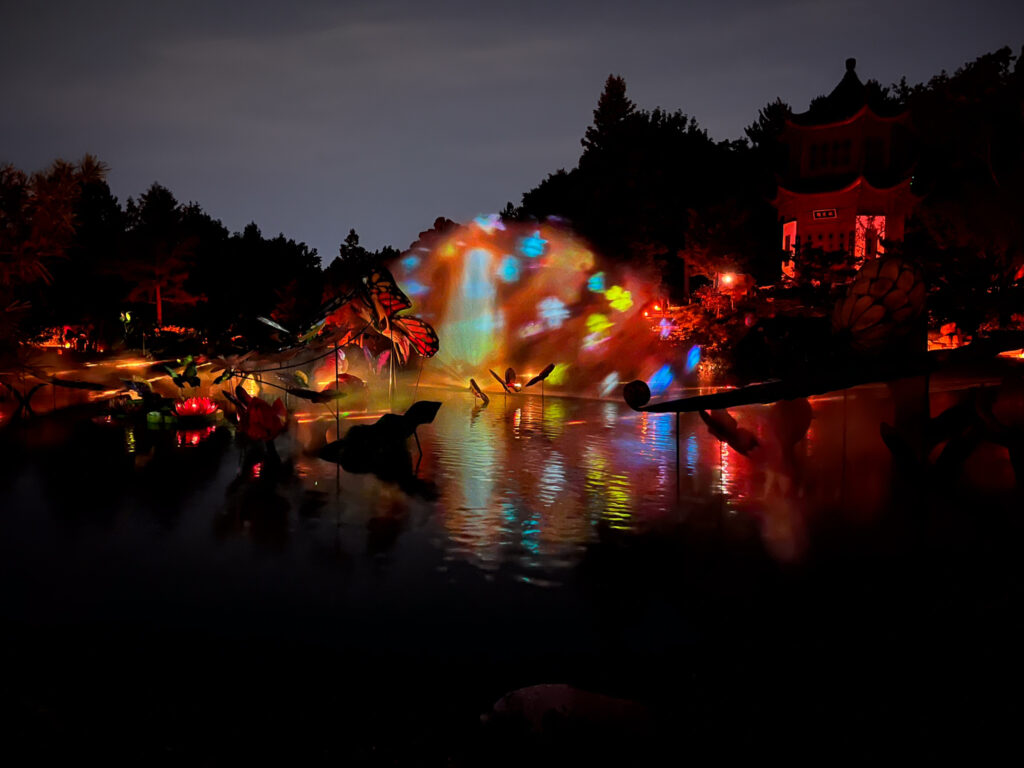
The design of the show, particularly the narrative that was formed at the different installations, really far exceeded anything we had expected. It was, in fact, the world of dreams and wonder that was promised.
(Pictures in this post are by both Manon and Sylvain)

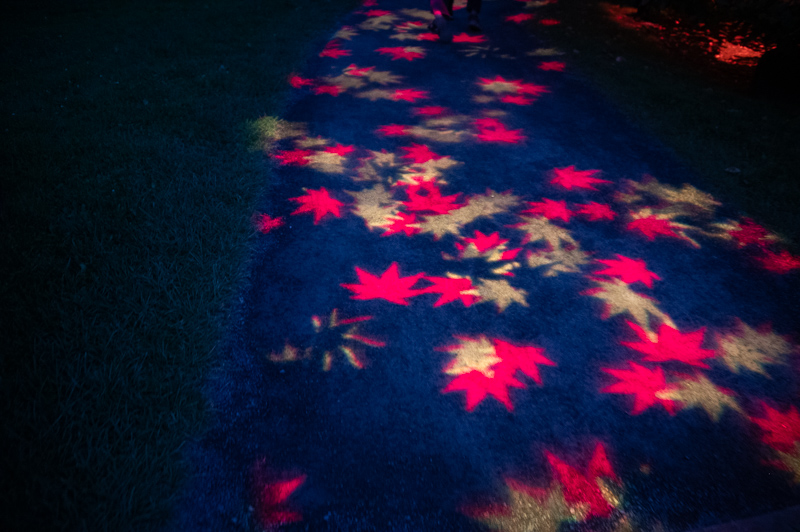
3 replies on “A World of Dreams and Wonder”
What fun!
Sounds like a must-see!
Wow! Thank you for this report!